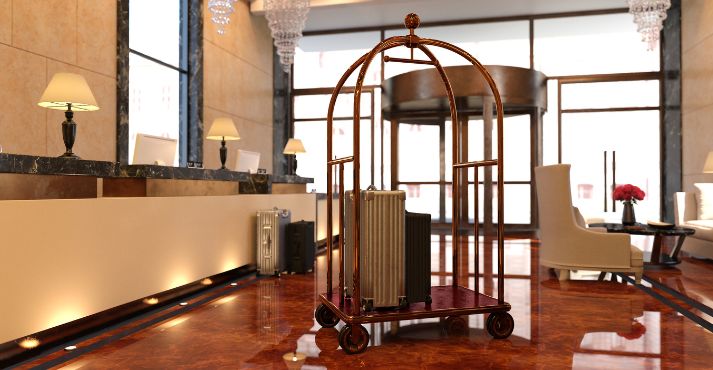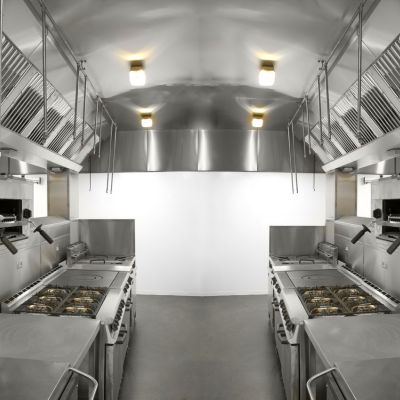Introducing the surge of dual-branded hotels in America and the emerging wave in Europe. This trend, marked by the coexistence of two distinct hotel brands within the same space, is gaining popularity in the U.S. and is anticipated to make waves across Europe.
The factors contributing to this rise include strategic partnerships, maximizing space efficiency, and offering diverse experiences to guests.
Let’s dive into the details, exploring how dual-branded hotels reshape the hospitality landscape on both sides of the Atlantic.
What are Dual-Branded Hotels?

1. Decoding Dual-Branded Hotels: A Shared Haven
Dual-branded hotels bring together two brands, maintaining individual identities while sharing spaces. It’s like having two hotels in one, offering a harmonious collaboration.
2. Coexisting Brands: The Beauty of Diversity
Dual-branded hotels offer diverse options. Luxurious and budget-friendly brands coexist, providing choices that suit various preferences and budgets.
3. Advantages of Dual-Branding: A Win-Win
This co-branding model brings synergies and operational efficiencies. Shared resources enhance the guest experience, providing a broader range of amenities.
4. Shared Spaces in Hospitality: A Practical Approach
Common areas like lobbies create a dynamic atmosphere, fostering a sense of community within the hotel.
5. Tailored Experiences: Meeting Diverse Needs
Dual-branded hotels cater to diverse traveler needs, offering ideal accommodations within the same building.
6. The Rise of Dual-Branded Hotels: A Global Trend
This trend is global, adapting to different markets and cultures showcasing its widespread popularity.
7. Future Trends: Evolving with Guest Demands
As the hospitality landscape evolves, dual-branded hotels will likely adapt to emerging trends and guest preferences.
Navigating the Significance and Suitability of Dual-Branded Hotels

Significance in Hospitality: A Strategic Evolution
Dual-branded hotels are pivotal in hospitality, presenting a strategic evolution that enhances operational efficiency and guest experience.
Business Suitability: Is Dual-Branding Your Strategic Fit?
Assessing the suitability of a dual-branded model requires a keen understanding of your brand synergy, target audience, and the dynamic demands of the market.
Strategic Assessment: Unveiling the Right Move
Determining whether a dual-branded approach aligns with your business goals involves a strategic evaluation. This includes examining how well your brand resonates with the potential partner, understanding your shared target audience, and gauging market demands.
Brand Synergy: The Heart of Dual-Branding Success
The harmony between partnering brands is a crucial factor. A successful dual-branded venture hinges on the synergy created, ensuring a seamless blend that enhances overall appeal.
Target Audience Alignment: Meeting Diverse Needs
Dual-branded hotels thrive when catering to a wide array of preferences. Understanding and aligning with the shared target audience is fundamental for success.
Market Demands: Adapting to Dynamic Landscapes
Consideration of market demands is paramount. Analyzing trends and anticipating shifts ensures the dual-branded model remains relevant and resilient.
Strategic Considerations Unveiled: Crafting Your Path
In determining the suitability for your business, strategic considerations form the roadmap. It’s not just about coexistence; it’s about strategic alignment, offering a distinct edge in the competitive hospitality landscape.
Exploring the Historical Journey of Dual-Branded Hotels

Unveiling the Past: Tracing the Evolution of Dual-Branded Hotels
1. Origins Unveiled: The Birth of Dual-Branded Hotels (1950)
The concept of dual-branded hotels was first conceptualized around 1950, marking a groundbreaking moment in the history of the hospitality industry.
2. Milestones Defined: Key Moments in the Development Timeline
The historical journey unfolds with critical milestones instrumental in developing dual-branded hotels.
From 1963, when the first dual-branded hotel, The Fusion Haven, opened its doors to subsequent landmarks like InnoSuites in 1978, each date signifies progress in the co-branding model.
3. Influential Cases: Shaping the Landscape
Dive into specific cases that pioneered the dual-branded model and significantly influenced the landscape of co-branded hospitality.
For instance, in 1985, the collaboration between Luxury Lodges and Urban Retreats showcased the successful partnership that set a precedent for the industry.
4. Adapting Across Eras: Responding to Shifting Dynamics (e.g., 1990s – 2000s)
Witness how dual-branded hotels demonstrated adaptability across different eras. During the 1990s and 2000s, as customer preferences and market dynamics shifted, these hotels evolved, ensuring their continued relevance.
5. Contemporary Landscape: The Now of Dual-Branded Trends (Present Day)
The prevalence of dual-branded hotels today speaks volumes about their captivating historical journey. Understanding the past provides context for this trend’s enduring popularity and relevance in the modern hospitality landscape.
6. Co-Branding Narratives: Reflecting on Historical Context (e.g., 2015 – The Synergy Story)
Delve into narratives that reflect the dynamic role of dual-branded hotels in reshaping the hospitality industry. Stories from 2015, such as The Synergy Story, highlight the collaborative efforts defining the co-branding narrative.
7. History as a Guide: Drawing Insights for Future Trajectories (Ongoing)
By exploring the past, we extract valuable insights to guide future trajectories. The historical journey of dual-branded hotels serves as a compass for ongoing innovation and strategic partnerships in the ever-evolving world of hospitality.
Pros and Cons of Dual-Branded Hotels
Advantages of Dual-Branded Hotels
1. Operational Efficiencies: Streamlining Excellence
These hotels streamline operations by sharing resources and services, reducing costs, and increasing efficiency.
2. Enhanced Guest Experiences: Elevating Hospitality Standards
Dual-branded hotels redefine guest experiences. With a diverse range of amenities and services, guests enjoy a multifaceted stay tailored to their preferences. The synergy between brands creates a unique and memorable environment.
3. Expanded Market Reach: Tapping into Diverse Audiences
One of the standout benefits is the expanded market reach. Dual-branded hotels can cater to a broader audience by combining the strengths and appeal of two distinct brands. This approach unlocks new opportunities and secures a more extensive market presence.
4. Competitive Edge: Thriving in the Industry Landscape
Adopting a dual-branded model positions hotels at the forefront of industry competition. The fusion of brands meets and exceeds customer expectations, providing a competitive edge in the dynamic hospitality landscape.
5. Strategic Alliances: Leveraging Collaborative Strengths
Dual-branded hotels foster strategic alliances, leveraging the strengths of each brand. This collaboration often results in innovative offerings and a more robust value proposition for guests.
6. Adaptability to Market Trends: Staying Ahead of the Curve
Stay ahead of market trends by integrating dual-branded strategies. The flexibility inherent in this model allows hotels to adapt to evolving consumer preferences and industry developments, ensuring long-term relevance.
7. Cost Savings: Maximizing Resources
Benefit from cost savings through shared resources. Whether in marketing efforts, staff training, or operational infrastructure, the pooling of resources contributes to financial optimization.
8. Brand Complementarity: Creating Synergistic Experiences
Dual-branded hotels capitalize on brand complementarity. Combining two brands creates a synergy beyond individual strengths, resulting in a unique and appealing proposition for guests.
Challenges of Dual-Branded Hotels
1. Identity Conflicts: When Brands Clash
Imagine two friends deciding where to go for dinner—it can get tricky. Dual-branded hotels face a similar challenge.
Each brand has its identity; merging them seamlessly can be like mixing oil and water. It requires a delicate touch to ensure both brands shine without stepping on each other’s toes.
2. Operational Coordination: The Balancing Act
Coordinating operations is like choreographing a dance. Dual-branded hotels need to synchronize everything—from staffing to services. It’s a challenge to make sure both brands are equally represented and that the overall guest experience is flawless.
3. Adapting to Diverse Market Dynamics: One Size Doesn’t Fit All
Different strokes for different folks—this saying holds for markets. Dual-branded hotels need to understand the diverse needs of their audience.
Adapting to varied market dynamics is like juggling; drop the ball, and it might impact both brands. It’s a challenge that requires a keen sense of balance.
4. Consumer Perception: Seeing Double
Guests might wonder, “Two brands in one hotel? How does that work?” Communicating the concept to consumers and ensuring they understand the value of dual branding can be a hurdle. It’s like telling a two-part story that needs to make perfect sense.
5. Marketing Maze: Creating a Unified Voice
Marketing is the megaphone of any brand. It’s about creating a harmonious message representing both brands for dual-branded hotels. It’s like finding the right notes in a song ensuring they blend seamlessly.
6. Staff Training: Two Brands, One Team
Imagine coaching a team with players from different sports. Dual-branded hotels need to train staff to embody the spirit of both brands. Ensuring everyone is on the same page and delivers a unified guest experience is challenging.
Strategies for Dual-Branded Success
1. Clear Brand Guidelines: Setting the Rules
Clearly defined brand guidelines act as a roadmap. Dual-branded hotels need rules that ensure each brand maintains its unique identity while contributing to harmony.
2. Robust Operational Protocols: The Backbone of Success
Operational coordination requires meticulous planning. Establishing robust protocols ensures everything, from day-to-day operations to special events, runs smoothly.
3. Market Research Mastery: Understanding the Audience
To adapt to diverse market dynamics, dual-branded hotels must master the art of market research. Understanding the audience allows them to tailor offerings that resonate with different guest segments.
4. Transparent Communication: Telling the Story
Clear and transparent communication is critical. Dual-branded hotels need to articulate the benefits of their unique model to guests, ensuring they see the added value of having two brands under one roof.
5. Integrated Marketing Strategies: Singing in Harmony
Marketing strategies should be a duet, not a solo. Integrated marketing ensures that both brands are represented cohesively, creating a harmonious message for potential guests.
6. Comprehensive Staff Training: Crafting Dual-Brand Ambassadors
Staff training is an ongoing process. Dual-branded hotels should invest in comprehensive training programs that instill a deep understanding of both brands, turning employees into dual-brand ambassadors.
Case Studies: Examples of Successful Dual-Branded Hotels
1. Harmony Suites
Brands: [Brand 1: Luxury Haven] + [Brand 2: Timeless Retreat]
Success Story: Harmony Suites seamlessly integrates the contemporary vibes of [Luxury Haven] with the timeless elegance of [Timeless Retreat]. The dual-branded approach has not only attracted a diverse range of guests but also optimized operational efficiency. By maintaining distinct brand identities while sharing facilities, Harmony Suites has achieved a harmonious balance, offering guests the best of both worlds.
2. Fusion Towers
Brands: [Brand 1: Modern Luxury] + [Brand 2: Eco-conscious Living]
Success Story: Fusion Towers is a prime example of strategic dual-branding. By strategically aligning [Modern Luxury]’s focus on modern luxury with [Eco-conscious Living]’s commitment to sustainability, Fusion Towers has created a unique proposition in the market. The hotel has witnessed increased market reach, attracting luxury-seeking and environmentally-conscious travelers.
3. Unity Residences
Brands: [Brand 1: Urban Elegance] + [Brand 2: Tranquil Escapes]
Success Story: Unity Residences has successfully navigated the challenges of dual-branded hospitality by emphasizing seamless operational coordination. By ensuring that staff is well-versed in the ethos of both [Urban Elegance] and [Tranquil Escapes], Unity Residences has created a unified guest experience. The result? Positive reviews, high guest satisfaction, and a competitive edge in the local market.
4. Nexus Suites
Brands: [Brand 1: Modern Sophistication] + [Brand 2: Cultural Fusion]
Success Story: Nexus Suites has strategically tapped into the advantages of dual-branding, optimizing operational efficiencies and enhancing the overall guest experience. Through thorough market research, Nexus Suites has tailored its offerings to a diverse audience, proving that a well-executed dual-branded model can be a crucial differentiator in a competitive market.
These case studies underscore the success of dual-branded hotels and offer valuable insights into the strategic considerations and advantages discussed earlier.
As the hospitality industry continues to evolve, these examples serve as beacons of innovation, showcasing how dual-branded hotels can thrive by combining the strengths of two distinct brands.
Conclusion
In conclusion, dual-branded hotels are rising in America, and the trend is gaining traction in Europe. This innovative concept, where two hotel brands share a single space, offers a strategic approach to maximize efficiency and cater to diverse guest preferences.
As we wrap up insights into dual-branded hospitality trends, businesses are urged to consider this co-branding model’s potential benefits and challenges.
Looking ahead, the future of co-branding in hospitality holds promise as the industry continues to evolve and adapt to changing guest expectations and market dynamics.








